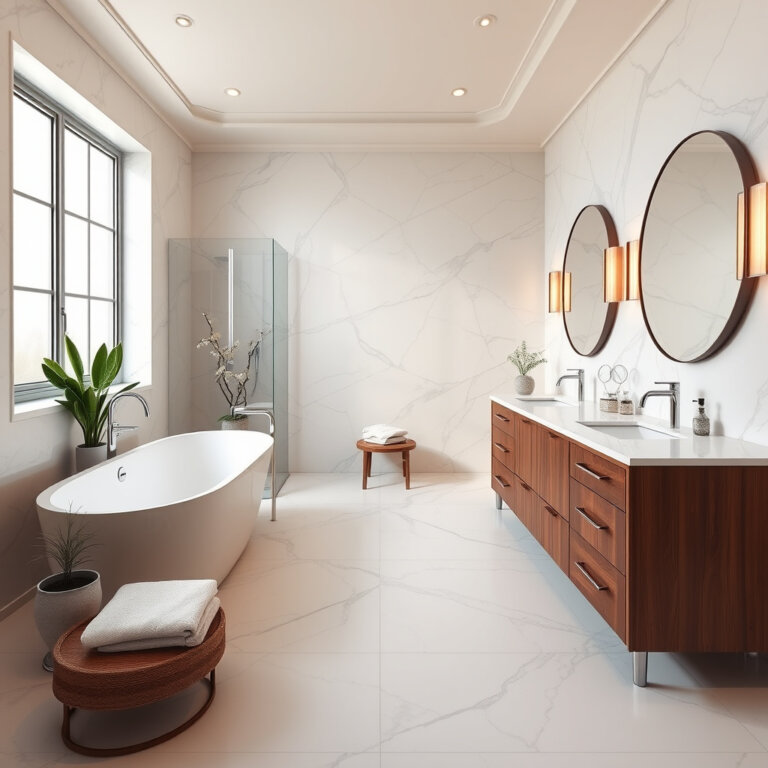What is Interior Design?
Interior design is the art and science of enhancing the interior of a building to achieve a healthier and more aesthetically pleasing environment for the people using the space. It involves a systematic and coordinated methodology that incorporates the use of space, color, lighting, furniture, and decor to create functional and visually appealing interiors.
The Importance of Interior Design in Massachusetts
In Massachusetts, where historic charm meets modern innovation, the role of interior design is crucial. Whether you’re a homeowner looking to renovate your living space or a real estate investor aiming to increase property value, understanding what interior design entails can significantly impact your decisions.
Interior design is not just about aesthetics; it also considers the functionality of a space. For example, in Boston, a city known for its unique architectural styles, interior designers often work to preserve historic elements while integrating modern conveniences. This balance not only enhances the beauty of a home but also its usability, making it a wise investment for homeowners and investors alike.
Key Elements of Interior Design
- Space Planning: This involves the arrangement of furniture and decor in a way that optimizes the flow and functionality of the space.
- Color Theory: Understanding how colors affect mood and perception is essential for creating an inviting atmosphere.
- Lighting: Proper lighting can transform a room, highlighting architectural features and creating ambiance.
- Materials and Textures: The choice of materials and textures can add depth and interest, influencing the overall feel of a space.
How to Choose an Interior Designer in Massachusetts
When selecting an interior designer, consider their portfolio and experience. Look for professionals who understand local design trends and regulations. In cities like Worcester and Springfield, where historical preservation is often key, a designer with experience in blending modern and traditional styles can be invaluable.
Applications of Interior Design in Daily Life
Interior design is not limited to high-end renovations; it can be applied in various contexts, enhancing everyday living. Here are some practical examples:
- Residential Spaces: Homeowners can utilize interior design principles to create functional and beautiful living areas. For instance, open-concept layouts are popular for maximizing space in smaller homes.
- Commercial Spaces: Businesses can benefit from strategic interior design to create inviting environments that enhance customer experience and employee productivity. For example, cafes in Cambridge often use cozy interior designs to encourage customers to linger.
- Real Estate Investments: Investors can increase property value by investing in professional interior design during renovations, making homes more appealing to potential buyers.
What is Interior Design Process?
The interior design process typically involves several steps:
- Consultation: Meeting with a designer to discuss needs, style preferences, and budget.
- Concept Development: The designer creates a concept that includes color schemes, materials, and layouts.
- Design Development: Finalizing the design details and selecting furnishings, finishes, and fixtures.
- Implementation: Overseeing the execution of the design, ensuring that everything is installed correctly.
- Evaluation: Reviewing the finished space to ensure it meets the initial goals and making adjustments as necessary.
Related Concepts in Interior Design
Understanding interior design also involves exploring related concepts, including:
- Architectural Design: The broader context of building design, which influences interior spaces.
- Landscape Design: The design of outdoor spaces that can enhance the overall feel of a property.
- Furniture Design: The creation of furniture pieces that complement interior spaces.
- Sustainable Design: Incorporating eco-friendly materials and practices into interior design.
Conclusion: Embracing Interior Design
Understanding what is interior design empowers homeowners, real estate investors, and contractors in Massachusetts to make informed decisions. Whether you are looking to refresh your living space, increase your property’s value, or create a welcoming commercial environment, the principles of interior design are invaluable. It’s not just about creating beautiful spaces; it’s about making spaces that work for you.
As you consider your next home renovation or design project, reflect on how interior design can enhance your environment. The right design can transform not just the physical space, but also how you experience your home or business. Engage with a local designer today and start your journey towards a beautifully designed space.






